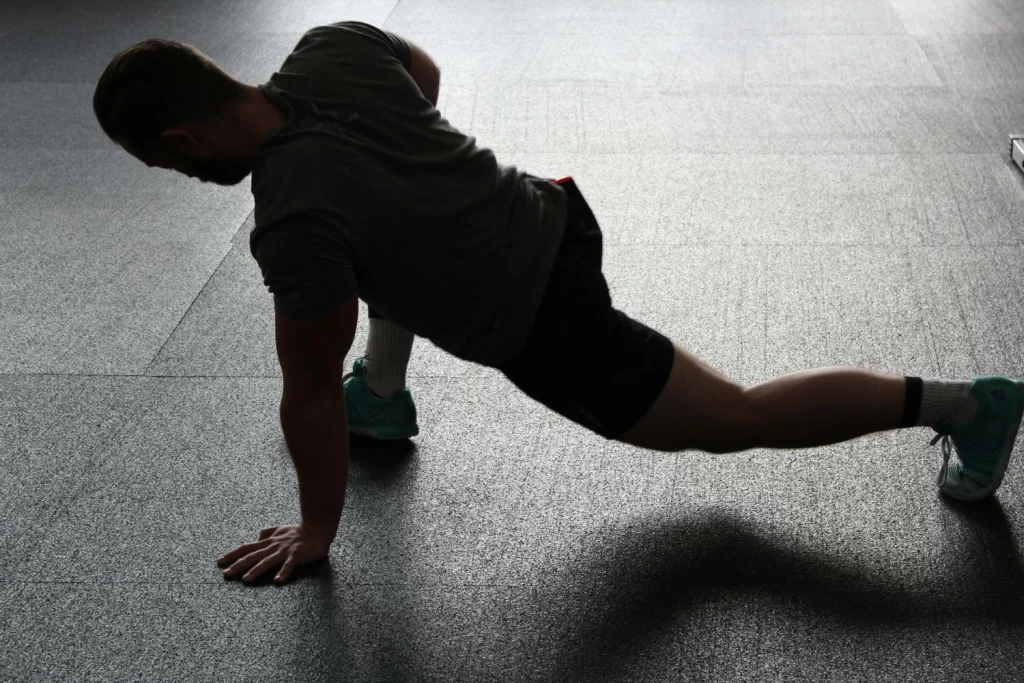Stretching & Inflammation: Do’s and Don’ts

Stretching doesn’t just feel good—it actually fights inflammation and eases joint pain in multiple ways.
When your body feels stiff, your joints ache, or you’re dealing with chronic inflammation, the last thing you may want to do is move. But here’s the twist: gentle movement, specifically stretching, can be one of the simplest and most effective ways to reduce inflammation and ease joint pain.
Let’s dive into the connection between stress, inflammation, arthritis, and joint pain, and how stretching can help. Plus, we’ll give you some practical stretching exercises, tips for incorporating them into your routine, and bonus advice on how diet and supplements can amplify the benefits.
The Science: Stress, Inflammation, and Joint Pain
Stress doesn’t just live in your mind—it can take a toll on your body. When you’re stressed, your body releases cortisol, which is helpful in small amounts. However, chronic stress can lead to persistent inflammation, a condition linked to a range of health problems, including arthritis and joint pain.
Here’s how it works:
-
Stress and Inflammation: Chronic stress triggers the release of inflammatory markers like cytokines, which can exacerbate swelling and pain in your joints.
-
Arthritis: Inflammatory conditions like rheumatoid arthritis are worsened by systemic inflammation. Even osteoarthritis, a degenerative condition, can feel worse when inflammation levels rise.
-
Joint Pain: Whether you’re an office worker sitting all day or an athlete pushing your body, inflammation can stiffen joints, making everyday activities feel harder.
How Stretching Comes to the Rescue
Stretching doesn’t just feel good—it actually fights inflammation and eases joint pain in multiple ways:
-
-
Improves Circulation: Stretching increases blood flow to your muscles and joints, helping to reduce swelling and deliver oxygen and nutrients to the affected areas.
-
Releases Muscle Tension: Chronic stress often leads to tight muscles, which put additional strain on your joints. Stretching helps loosen these muscles, reducing pressure on your joints.
-
Activates the Parasympathetic Nervous System: Stretching triggers your body’s “rest and relax” mode, lowering cortisol levels and reducing systemic inflammation.
-
Increases Range of Motion: Stretching improves flexibility and mobility, which can help reduce stiffness and make everyday movements less painful.
-
What to avoid and how to do it right
Yes, there are ways to do it wrong, but the signs won’t be hard to spot:
-
DON’T stretch immediately after waking up: when you wake up, your spine is full of fluid, increasing the chances of injury. Give yourself 20-30mins at least. Have your coffee, tea, or other fluids and then get into the stretch.
-
DON’T Hold intense stretches too long: if you’re new at this, be gentle, keep stretches short and nice until your body becomes more used to the flow.
-
Warm up: stretching is not a warm up (!!) instead, do a light aerobic exercise before you get info your stretch to raise your body’s temperature a bit and get your fluids going. This will increase blood flow and make the routine more effective, while protecting you from injury.
-
Breathe: Breathing into the stretch increases your flexibility, relaxes the muscles, and allows blood to flow properly delivering oxygen to the muscles.
-
Stop if it hurts: stop right before it starts hurting. Stretching shouldn’t be painful. It’s a one inch at a time time of progress.
5 Simple Stretches to Reduce Joint Pain
Here are some easy stretches to get you started. These target common areas of inflammation and stiffness, including the hips, knees, shoulders, and back.

Stretching reduces inflammation and can be very helpful with joints and muscle pains.
1. Cat-Cow Stretch
-
Targets: Spine, shoulders, and hips.
-
How to Do It: Start on all fours. Inhale as you arch your back and look up (Cow). Exhale as you round your spine and tuck your chin to your chest (Cat). Repeat 8-10 times.
-
Why It Helps: This stretch improves spinal mobility and reduces tension in the back and hips.
2. Hip Flexor Stretch
-
Targets: Hips and lower back.
-
How to Do It: Step one foot forward into a lunge position, keeping your back leg extended. Sink your hips forward while keeping your chest upright. Hold for 20-30 seconds on each side.
-
Why It Helps: Opens tight hip flexors and reduces pressure on the lower back.
3. Child’s Pose
-
Targets: Lower back, hips, and knees.
-
How to Do It: Sit back on your heels, stretch your arms forward, and rest your forehead on the ground. Hold for 30-60 seconds.
-
Why It Helps: Gently stretches the lower back and relieves joint tension in the hips and knees.
4. Seated Forward Fold
-
Targets: Hamstrings and lower back.
-
How to Do It: Sit on the ground with your legs extended. Hinge forward from your hips and reach for your feet or shins. Hold for 20-30 seconds.
-
Why It Helps: Loosens tight hamstrings and reduces strain on the knees and lower back.
5. Neck Stretch
-
Targets: Neck and shoulders.
-
How to Do It: Sit or stand tall. Tilt your head to one side, bringing your ear toward your shoulder. Hold for 15-20 seconds on each side.
-
Why It Helps: Releases tension from the neck and shoulders, areas commonly affected by stress.
When to Stretch and Tips for Success
-
Morning Routine: Start your day with 5-10 minutes of stretching to loosen up stiff joints and prepare your body for the day. You can follow a Sun Salutation routine, or create your own combination.
-
Post-Workout: Stretch after exercise to prevent stiffness and reduce post-workout inflammation.
-
Before Bed: Gentle stretches at night can help calm your nervous system and promote better sleep.
-
Be Consistent: Aim for at least 3-4 days a week to see lasting results.
Final Thoughts
Stretching is a simple yet powerful tool to combat inflammation, ease joint pain, and reduce stress. When paired with a holistic approach—including an anti-inflammatory diet and targeted supplements—you can amplify these benefits. Incorporating foods like turmeric, ginger, leafy greens, and fatty fish, while reducing processed foods, helps lower inflammation naturally. Supplements such as omega-3s, curcumin, glucosamine, and chondroitin can further support joint health and mobility. By combining regular stretching, smart dietary choices, and the right supplements, you’re setting yourself up for long-term joint health and overall well-being. Stay consistent, and your body will thank you!

